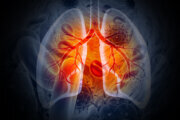Of the many ways you can choose to eat, some provide more health benefits than others. While it might be fun once in a while to scarf down junk food or feast on a thick steak, doing so every day could have serious, negative long-term health consequences.
Eating a whole-food, plant-based diet has been found to be one of the best ways you can take your health into your own hands and prevent or delay the development of common chronic diseases such as diabetes, heart disease and cancer.
There are a variety of ways to enjoy a plant-based diet, from veganism, which strictly eliminates all animal products, to the Mediterranean diet, which features some meat but relies mainly on whole foods and a lot of plants. Somewhere in the middle of the spectrum of options lies both the vegetarian and the pescatarian diets.
[See: The 10 Best Diets for Healthy Eating.]
What Is a Vegetarian Diet?
A vegetarian diet is one that does not contain meat, poultry or fish, explains Janet Shannon, a registered dietitian with Providence Mission Hospital-Mission Viejo and Laguna Beach in Southern California.
Some vegetarian recipes may include some animal products, such as eggs, milk or honey, but not the meat of animals. There are different types of vegetarians, with the most common classifications revolving around what’s included in the diet:
— Lacto vegetarians. These individuals eat dairy products, such as milk, cheese, butter, yogurt and cottage cheese.
— Ovo vegetarians. These individuals eat eggs.
— Lacto-ovo vegetarians. These individuals eat both eggs and dairy products.
A balanced vegetarian diet will feature a lot of plants and whole grains, but also may include:
— Dairy.
— Beans.
— Legumes.
— Eggs.
— Honey.
[See: What to Know About Becoming Semi-Vegetarian.]
What Is a Pescatarian Diet?
The pescatarian diet’s meals are much like those in the vegetarian diet in that they eschew meat and poultry, but pescatarians do eat some fish. Pescatarian recipes contains:
— Fruits and vegetables.
— Milk and other dairy products.
— Eggs.
— Grains.
— Beans and legumes.
— Nuts and seeds.
People following a pescatarian diet plan, Shannon notes, “avoid meat, poultry and products made from meat and poultry such as gelatin, broths and lard.”
The pescatarian diet is also sometimes called a pesco-vegetarian or partial vegetarian diet, says Cathy Leman, a registered dietitian, speaker and writer based in Chicago.
Many people think of the pescatarian diet as being a slightly more flexible version of the vegetarian diet.
[SEE: Top Plant-Based Diet Meal Delivery Services.]
Comparison of Vegetarian and Pescatarian Diets
Health Benefits
Because both diets are considered plant-based, followers will achieve many of the benefits associated with plant-based diets. This approach to eating — when done right — has been associated with plenty of health benefits including:
— Better control of blood pressure.
— Better control of blood glucose.
— Less inflammation throughout the body.
— Reduced cholesterol levels.
These factors can translate into:
— Improved heart health.
— Reduced risk of developing diabetes.
— Reduced risk of certain types of cancer.
“Compared with meat-eaters, vegetarians tend to eat less saturated fat and cholesterol and more vitamins like C and E,” Leman says. Pescatarians also tend to eat less saturated fat and cholesterol and both groups tend to consume more of several vitamins, minerals and other compounds that can support good health. These include:
— Fiber. Consuming enough fiber is a key component of staying healthy; dietary fiber supports regular bowel movements, keeps blood glucose levels stable and helps support a diverse gut microbiome, which is important to keeping your immune system healthy. “The majority of immune cells within the body are found in gut tissues called GALT, which stands for gut-associated lymphoid tissue,” explains DJ Blatner, author of “The Flexitarian Diet” and a wellness expert with NOW, a supplement company based in Bloomingdale, Illinois.
The U.S. Department of Agriculture recommends that people take in 14 grams of fiber per 1,000 calories they consume; if you’re eating 2,000 calories per day (which is the amount most nutrition labels are based on) you’d need 28 grams of fiber each day.
— Potassium. “Benefits of potassium include appropriate functioning of your nerves, regulation of fluid balance and maintaining a regular heartbeat,” says Maggie O’Meara, a registered dietitian nutritionist with Torrance Memorial Medical Center in Torrance, California. “This mineral is also essential for proper muscle contraction and decreasing risk of severe muscle weakness or cramps.” Higher consumption of potassium-rich foods, especially those from fruits and vegetables, has been shown to lower blood pressure and the risk of heart disease or strokes.
Adults should consume 4,700 milligrams of potassium daily, but O’Meara notes that “less than 2% of Americans are meeting the U.S. recommendations for this mineral.” Good sources include baked potatoes with the skin on — clocking in at about 925 milligrams for a medium potato — and avocados — half an avocado contains 487 milligrams.
— Magnesium. Magnesium is critical to the proper electrical functioning of the heart. Men age 18 and older should consume 400 to 420 milligrams per day while women are advised to get 310 to 320 milligrams daily. Nuts and seeds such as pumpkin seeds and almonds contain lots of magnesium. One ounce of pumpkin seeds contains nearly 170 milligrams of magnesium, while an ounce of dry-roasted almonds contains 80 milligrams of this important nutrient.
— Phytochemicals. These plant compounds, which include carotenoids (a class of pigments found in plants), flavonoids (which include compounds found in vegetables, chocolate and tea) resveratrol (found in wine, grapes and berries) and a variety of other substances have been found to have favorable effects on health through their anti-inflammatory properties.
One advantage that people eating pescatarian meals have over vegetarians is they’ll also get plenty of omega-3 fatty acids, “which are known for their heart-protective and anti-inflammatory properties,” Shannon explains. Omega-3s are essential compounds that the body can’t make on its own — you have to ingest them as part of your diet or in supplement form.
They are critical to maintaining cardiovascular health. Healthy adults should aim to consume between 250 and 500 milligrams of omega-3 fatty acids per day. Fatty fish, such as sardines, mackerel and salmon are rich sources of omega-3s.
Risks
One specific risk associated with a pescatarian diet is the presence of mercury or heavy metals, says Emilie Vandenberg, a registered dietician with the Ohio State University Wexner Medical Center. “I think that’s the most common thing we hear about,” in terms of risks associated with a fish-heavy diet. Exposure to too much of certain heavy metals can be toxic, leading to a range of problems in the gastrointestinal system, kidney dysfunction, immune system dysfunction, nervous system disorders, birth defects or cancer.
Fish, shellfish and other seafood accumulate mercury in their bodies. As bigger fish eat smaller fish, this can drive up the concentration of these potentially dangerous toxins in the flesh of the larger fish.
Generally speaking, the lower the fish is on the food chain, the less mercury it’s going to have in its tissues. This is why some health experts recommend limiting your intake of larger fish, such as tuna, swordfish, king mackerel and shark. Particularly for people who are pregnant or nursing, you should avoid fish that could be contaminated with mercury, as high levels can damage the developing fetus or growing baby, Vandenberg says.
With vegetarian diets that do not include fish, mercury contamination is not a concern, but, “with any diet that excludes whole food groups like meat or milk, careful planning is key,” Shannon says. Because whole groups of foods are excluded, there’s the potential to miss out on certain nutrients, such as vitamin B12, iron and zinc. But by carefully considering what you’re eating and choosing foods that offer a broad variety of essential vitamins and minerals, those risks can be mitigated.
“Without this careful planning, increased health risks or worsening of medical conditions associated with deficient intakes of these nutrients may occur. For example, otherwise healthy persons like the growing infant or adolescent and those with osteoporosis can be at risk” of a worsening of bone density if they aren’t getting adequate calcium in their diet, Shannon says.
Another common concern among people following a vegetarian or plant-based diet that eliminates animal protein sources is that the individual’s protein intake might fall.
“Protein contains essential amino acids or the ‘building blocks’ that are absolutely critical for healthy functioning bodies,” Shannon says. “While plant foods do have protein,” for some vegetarians or pescatarians, getting enough might take a little extra effort.
Vandenberg also notes that fish and seafood aren’t the only sources of protein in the pescatarian diet. “You can get protein from beans, legumes, tofu and soybeans.” So again, a well-planned diet, whether it’s strictly vegetarian or includes some seafood, can provide more than enough protein.
When viewed from a public health perspective, Shannon notes that “many health organizations recommend moving toward more of a plant-based diet.”
Leman agrees that by and large, the vegetarian diet can be a very healthy alternative to the standard American diet, which typically features lots of meat, ultra-processed foods, saturated fats and sugar.
Because whole-food, plant-based approaches like the vegetarian diet plan and the pescatarian diet plan tend to include less sugar and calories, they can be used for weight loss. But you’ll have to manage portions and make sure you’re getting enough protein to support sustainable weight loss. Most health care providers recommend aiming for a weight loss of one to two pounds per week as being safe and sustainable.
Costs
Both vegetarian and pescatarian diets can be budget-friendly, especially if you’re including conventionally-grown produce instead of seeking out only organic items, Leman says. “The addition of seafood in a pescatarian diet could increase the cost, but choosing canned and frozen options, especially when they’re on sale, can help reduce the cost.”
Red meat and poultry can be expensive, so forgoing these purchases in favor of more fresh fruits and vegetables, whole grains, legumes and fish could reduce your overall shopping bill.
As with any diet, the quality of the food is also important. Look for whole, unprocessed options rather than prepackaged or prepared foods. These whole foods that you cook yourself are usually less expensive than prepared foods.
Pescatarian vs. Vegetarian: Which One Is Better?
Both the pescatarian and vegetarian approaches to eating can be perfectly healthy diets, provided you’re focused on eating whole, unprocessed foods rather than packaged junk foods. “It all comes down to which foods you’re choosing and whether you’re covering all your needs. You need a variety of vitamins and minerals to cover your bases,” Vandenberg says.
One area where pescatarian diets might have a leg up over strictly vegetarian diets is in providing more omega-3 fatty acids.
Leman says there’s “not a lot of research comparing pescatarian diets to strictly vegetarian diets. However, there is evidence that plant-based diets, with or without the inclusion of seafood or fish, are healthful.”
Here’s what to consider:
| Pescatarian | Vegetarian | |
| Food | Plant-based diet that includes dairy, eggs and seafood. | Avoidance of meat, but may include some animal products, such as dairy or eggs. |
| Weight Loss | May cause weight loss when portions are controlled. | May cause weight loss when portions are controlled. |
| Health Risks | High levels of mercury in some fish could pose a problem if eaten in sufficient quantities. | Possible nutrient deficiencies, such as in vitamin B12 or omega-3 fatty acids. |
| Health Benefits | Possible cardiovascular benefits, such as lowered cholesterol and blood pressure and reduced risk of stroke.
May be a better option for people with high blood pressure, high cholesterol levels and other cardiovascular issues because of a higher intake of omega-3 fatty acids. |
Possible cardiovascular benefits, such as lowered cholesterol and blood pressure and reduced risk of stroke.
May be the better option for pregnant or nursing mothers because of the risk of mercury contamination in some fish. |
Tips for Adopting a Pescatarian or Vegetarian Diet
If you’re interested in trying out the pescatarian or vegetarian lifestyle, a little planning up front will make a big difference in the long run, Leman says. “It’s important to plan, include whole, unprocessed foods, load up on produce and be deliberate in choosing a variety of foods to meet all nutrient needs.”
This is where meeting with a dietitian to determine the optimal nutrient intake for your specific situation can help. “A registered dietitian’s job is to recommend a diet for a patient only after considering a patient’s sex, age, health history, medications, weight, etc. and individualizing a diet with that patient in mind. This means that a diet recommended to a patient may be different from that recommended to the general population,” Shannon explains.
More from U.S. News
12 Health Benefits of a Plant-Based Diet
Best Mediterranean Diet Food List
A Day’s Worth of Meals on the Mediterranean Diet
Pescatarian vs. Vegetarian originally appeared on usnews.com
Update 06/06/22: This story was previously published at an earlier date and has been updated with new information.







